Launched during Jobber Professional Development Day, Boost by Jobber will help launch, grow, and strengthen small home service businesses Jobber, the leading provider of home service management software, today unveiled Boost by Jobber, a grant program to further support the hard-working entrepreneurs within the home services sector. Aspiring entrepreneurs, new business owners, and longtime home Read more
Uncategorized
Launched during Jobber Professional Development Day, Boost by Jobber will help launch, grow, and strengthen small home service businesses
Jobber, the leading provider of home service management software, today unveiled Boost by Jobber, a grant program to further support the hard-working entrepreneurs within the home services sector. Aspiring entrepreneurs, new business owners, and longtime home service entrepreneurs are invited to apply for free grants ranging from $1,000 to $20,000 depending on the category their business qualifies for. Twenty home service businesses across 50+ industries such as lawn care, plumbing, residential cleaning, and painting, will be awarded $100,000 in total. Applications are now open through May 5, 2021. Finalists will be announced in July 2021 with the list of winners announced in August 2021.

“Home service entrepreneurs impact their local communities and neighborhoods in meaningful ways,” said Sam Pillar, CEO & co-founder at Jobber. “They employ millions of people while operating behind-the-scenes to keep homes, offices, and other spaces safe and in good working order—yet, despite their important contributions, small businesses are largely underserved when it comes to business financing. Boost by Jobber helps address this gap by providing service business entrepreneurs with some extra working capital that may not otherwise be available through traditional banks and government grant programs.”
Royce Ard, who owns My Amazing Maid with his wife, Tamara, further validates this statement. “Typically when I see a grant, I’m almost always assuming it’s for a specific cohort and I wouldn’t qualify,” explained Ard. “Loans are very, very, very hard to get. As far as going to a bank and getting $10,000 for a small business like ours, you’re not going to get it.”
Boost by Jobber grants are organized into categories that reflect various stages of company growth, from ideas on paper to recently launched ventures to established businesses—as well as an additional category for COVID-19 support. Five winners will be selected from each of the following:
- Almost-entrepreneurs (pre-business): Those who have the drive to start and run a home service business, but need funds to get started.
- New business owners (0-3 years): Entrepreneurs who are in the early stages of building their team, client list, and services.
- Experienced business owners (3+ years): Entrepreneurs who are ready to scale their mature business to the next growth stage.
- COVID-19 support: Entrepreneurs seeking financial support or resources for their team’s well-being.
Jobber spoke with dozens of service professionals to better understand the impact extra cash flow could have on a business, to create the grant categories, and to determine the dollar values assigned to each grant. Whether a company is looking to purchase new equipment, increase marketing dollars, launch a new service, train teams, or is in need of financial relief, funds from the Boost by Jobber program can make a big difference in helping small business owners be more successful.
“People don’t understand the value of the cash flow,” stated Steven Knight, Partner at Mosaic Home Services Ltd. “It’s not necessarily only helping the business. It’s helping the business owners. Their ability to lead people and calm down. Cash flow helps them be a better business leader.”
Boost by Jobber is one of many initiatives within Jobber’s home service ecosystem that is dedicated to supporting the home service entrepreneur, whether it’s through the company’s award-winning business management software, resources such as Jobber Academy, community building via the company’s Entrepreneurship Group on Facebook, and more.
To learn more about Boost by Jobber or to apply, visit: http://boostbyjobber.com.
The National Science Foundation’s Daniel K. Inouye Solar Telescope in Maui, Hawaii, uses the largest mirror of any solar telescope in the world. Thanks to its 13-foot-wide mirror, it collects seven times more sunlight than any other solar telescope, producing the clearest, highest-resolution images ever taken of the sun. Not surprisingly, a solar telescope of Read more
The National Science Foundation’s Daniel K. Inouye Solar Telescope in Maui, Hawaii, uses the largest mirror of any solar telescope in the world. Thanks to its 13-foot-wide mirror, it collects seven times more sunlight than any other solar telescope, producing the clearest, highest-resolution images ever taken of the sun.

Photos courtesy of NSO/AURA/NSF
Not surprisingly, a solar telescope of this size produces a lot of heat. With a working lifespan of about 50 years – after more than two decades of planning by the National Solar Observatory and its partners – there is a lot that goes into keeping the telescope cooled so it can provide groundbreaking scientific insights.
And that’s where Viega comes to the table.
An enormous, unique project
Eventually, there will be more than seven miles of thermal piping within the telescope and support buildings, explained Lou Szabo, Facility Thermal Systems Site Coordinator for the National Solar Observatory. He spends his days helping to finish construction and commissioning the equipment that recently began collecting images of the sun.
Much of the piping was prefabricated years ago, as various parts of the facility and telescope were being built (construction has taken about 10 years). Traditional methods, mainly welding, were used. But then the project came to a crossroads.
“As the various science instruments are installed and other devices added to the telescope, the final piping needs to be completed or modified, and oftentimes in close proximity to optics or one-of-a-kind electronics that are worth millions of dollars – things that would take many years to reproduce if damaged,” Szabo said. “We can’t have any joining methods that use heat or fumes. It has to be a very clean process.
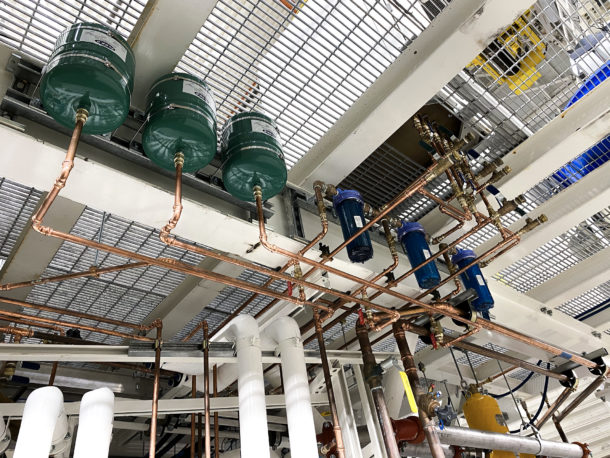
“The only way to install these remaining piping runs is with a joining system that meets the ‘no heat, no fumes, no dust’ requirements – and Viega hit that mark. We can go into these critical areas with very little equipment and complete press joints within inches of sensitive equipment, and the crews don’t have to worry about damaging it.”
As the need for a press-fitting solution surfaced, Szabo was already aware of Viega. He’s been in the piping trades for more than three decades and had previously used Viega.
He also knew that Viega had a large variety of fitting choices and, more importantly, offered plenty of technical support.
“When I presented the press system to the lead engineers and the decision-makers, I had to bring the best system I knew of,” he said. “Viega had been around the longest and had the best technical support if we had a question or got into a bind. We knew we had the reliability of the system behind us. It was really the only choice. I wouldn’t have been comfortable with others.”
Another factor to account for is the ozone conditions. The telescope is located at Haleakalā Observatories, at 10,000 feet in elevation, on the island of Maui. This location allows for great conditions for observing the sun but brings with it other unique elements, too.
“There is a high ozone content in the atmosphere here. Ozone was attacking a lot of rubbers and things, so we use HNBR sealing elements in all of our fittings,” Szabo said. “Some of the coolants we use are more exotic, and the HNBR holds up.”
The bulk of the coolant used is Dynalene HC20. The manufacturer lists both HNBR and EPDM as compatible materials, but the EPDM seal isn’t as resilient with the ozone presence, so Viega’s HNBR sealing elements are the right fit.
Inner workings of the telescope site
A series of primary loops come from the main mechanical/utility building, where all the chillers are located. The loops run to heat exchangers, followed by secondary and tertiary loops. There are dozens of pumps and tanks involved in the complex setup.
Piping in the system includes everything from 6” carbon steel piping to ½” copper tubing. Stainless steel is also used. The miles of piping run coolants and air to keep the telescope project at an appropriate temperature and to keep everything working smoothly. Viega ProPress fittings up to 3” in diameter and MegaPress fittings as large as 2” are used throughout the site.
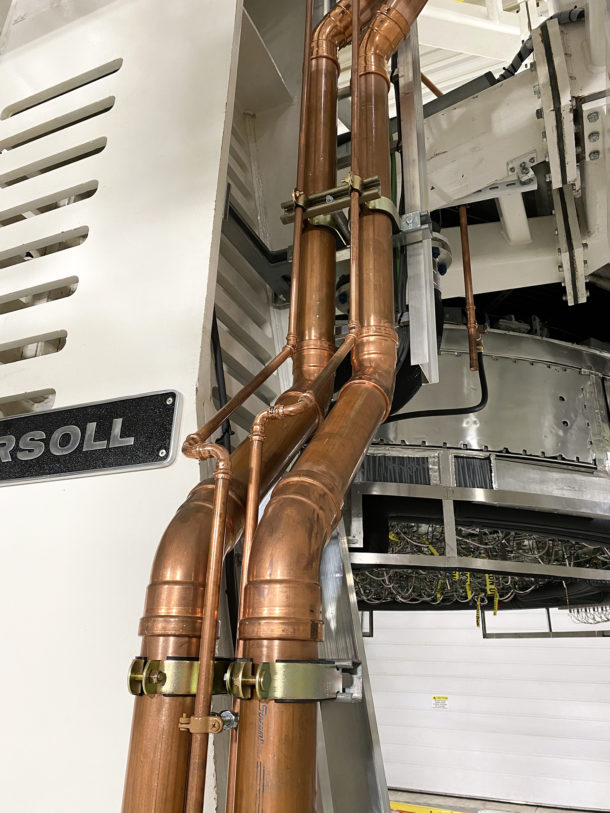
The mirrors and transfer optics are cooled in a variety of ways, including cooled liquid and air. For example, air a few degrees below ambient temperature is typically blown on the back of the mirror cells.
The Dynalene coolant runs at a very low temp, some as low as –2 degrees F, some around 45 degrees. The coolant is also environmentally friendly, which was important for the culturally sensitive site that carried with it many environmental guidelines. Propylene glycol mixtures are also used in some of the scientific chillers.
“A challenge we have in the middle of the Pacific is having fittings available, and that’s why we try to keep our setup as simple as we can,” Szabo said. “It’s also why we went with MegaPress and ProPress. Much of it is available on the islands, whereas other systems are more difficult to get.
“We try to keep a stock of certain fittings and materials on hand and stay ahead of the game. Oftentimes we’re looking at a two- to four-week lead time to get less-common fittings to the island. Thankfully our supplier, PACE Supply, can often get us common fittings within a couple of days.”
Szabo said they strive to keep the piping runs as simple as possible to both limit flow restriction and allow the use of standard elbows, adapters, tees and couplings, which are more readily available on the island.
One-of-a-kind solar research
Plans for the Inouye Solar Telescope (named for the late Daniel Inouye, the U.S. Senator from Hawaii who played a crucial role in getting finances approved for the project and was a big advocate of STEM and science) started 25 years ago. Dr. Claire Raftery, Head of Education, Outreach and Communication for the National Solar Observatory, said innovating how to build something so complicated – and then get it funded – was a massive undertaking.
There was an extensive survey done to determine the location of the telescope. A few hundred sites worldwide were reduced to a short list of 72, which was whittled down to a six. From there, only three met the specific requirements that scientists were looking for, and the location in Maui was chosen.
The Inouye Solar Telescope’s unique location combines clear and vivid blue skies needed to observe the faint corona of the sun with a high elevation and low air turbulence of the atmosphere above the telescope. Thanks to all these things, the telescope can produce the best images of the sun ever taken so that scientists can learn more about the dynamic star.
“We’re studying an object that there’s still a lot of mystery around. Many questions remain unanswered because we don’t yet have the capability to answer them,” Raftery said. “We need more detail, higher resolution – and these are things this telescope will bring to the table. It’s really a fortuitous time to be working in the solar physics industry.”
The telescope is expected to be operational for at least 44 years – four solar cycles – which is one of the benefits of ground-based astronomy, Raftery explained.
“We can expand the abilities of this project much longer than we could from space,” she said. “It’ll never really stop being finished. We can adapt and improve. The team will continue to bring new science experiments online through the life of the telescope.”
Part of the federal requirements from the National Science Foundation include returning the site back to the way it was found, so in 50 years they won’t simply turn off the lights and walk away, but instead the project will eventually be removed from the site after it has run its course.
But with that prospect decades into the future, for now everyone involved with the project is exhilarated as the telescope begins recording images of the sun.
“I remind the crews that they are the only ones in the entire world working on this unique system,” Szabo said. “This is truly a one-of-a-kind project.”
Standing in the entryway to the office, I noticed a poster on the door which read, “Write drunk, edit sober.” A quote attributed to Ernest Hemingway, I knew like hell he wanted to, but I don’t think he would ever sacrifice the things he did the best. You see, Bob Mader was the consummate professional Read more
 Standing in the entryway to the office, I noticed a poster on the door which read, “Write drunk, edit sober.” A quote attributed to Ernest Hemingway, I knew like hell he wanted to, but I don’t think he would ever sacrifice the things he did the best. You see, Bob Mader was the consummate professional who communicated volumes from the weight of his words. And perhaps that’s why he had that poster on the door. Hemingway was famous for short prose and bereft of too many details, a mirror for Mader’s verbal prowess. He was a man a few words, anyone would tell you that. But once you got in, you could feel his warm heart, his hearty laugh, his dry sense of humor and the grace in which he interacted with people. And putting pen to paper, he was the best at his craft. The hard work, the writing, the preparedness and research, and the long hours to be “fair and balanced” to everyone, no matter the circumstances.
Standing in the entryway to the office, I noticed a poster on the door which read, “Write drunk, edit sober.” A quote attributed to Ernest Hemingway, I knew like hell he wanted to, but I don’t think he would ever sacrifice the things he did the best. You see, Bob Mader was the consummate professional who communicated volumes from the weight of his words. And perhaps that’s why he had that poster on the door. Hemingway was famous for short prose and bereft of too many details, a mirror for Mader’s verbal prowess. He was a man a few words, anyone would tell you that. But once you got in, you could feel his warm heart, his hearty laugh, his dry sense of humor and the grace in which he interacted with people. And putting pen to paper, he was the best at his craft. The hard work, the writing, the preparedness and research, and the long hours to be “fair and balanced” to everyone, no matter the circumstances.
 As I entered his office, I scanned the room and noticed all of the trinkets, the swag from industry events, the trade show name tags strategically located throughout—five decades of experiences in the plumbing and HVAC industry. Stuff that most of us take for granted or throw away as soon we leave. Not Mader. He loved every part of being a trade journalist. He lived it.
As I entered his office, I scanned the room and noticed all of the trinkets, the swag from industry events, the trade show name tags strategically located throughout—five decades of experiences in the plumbing and HVAC industry. Stuff that most of us take for granted or throw away as soon we leave. Not Mader. He loved every part of being a trade journalist. He lived it.
While Bob was working late that Friday afternoon to finish a story, I sat down and started picking up those experiences. The demo fitting from a trip to Wichita, the beer stein from the trips to Germany, the cowboy hat from a trip to Nashville, the bobblehead from the trip to Fenway and the basket of thumb drives from the annual trade shows. The room was full of experiences, and great memories.
 Bob sometimes brought his wife, Kevyn, to these events, and I was fortunate to meet her and share a laugh with the both of them. While on a trip to D.C., she affectionately referred to him as her “warm biscuit.” Warm, affectionate and caring in every way, I completely understood.
Bob sometimes brought his wife, Kevyn, to these events, and I was fortunate to meet her and share a laugh with the both of them. While on a trip to D.C., she affectionately referred to him as her “warm biscuit.” Warm, affectionate and caring in every way, I completely understood.
Bob Mader passed away this past Monday, February 22, and it has left a hole in my heart. When Kevyn informed me through a message on Facebook, I couldn’t believe it. I mean, I had just talked with him last week. How could this be possible? I assumed that her account had been hacked. I immediately called his cell and it rang until I heard that familiar voice—that he’d get back to me as soon as he could. But this time, he wouldn’t.

Bob was a gentle giant. Gentle in how treated people with grace, dignity and fairness. Giant not in size but in journalistic stature through the weight of his pen. For nearly five decades, Bob was the consummate professional as he championed for the PHVAC industry, and he went about his business the right way. He was my mentor and my good friend, and I will miss him dearly. I love you, Bob Mader. I hope you know that.
I’m sure you all have your stories with Bob, and let’s rejoice them. Let’s raise a glass and cheer our good friend. And oh, please don’t let Mader know, I don’t think Hemingway ever said that. 🙂
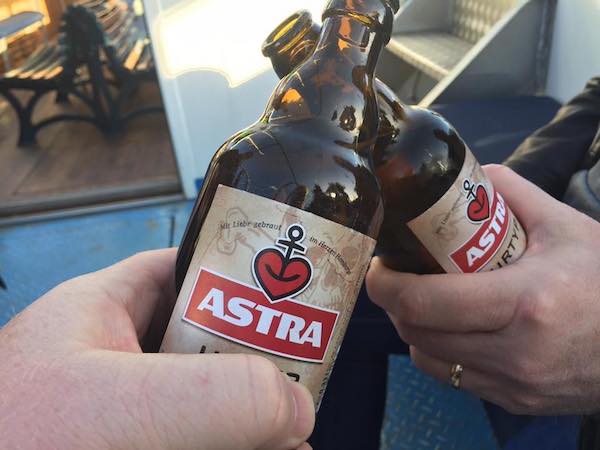

It’s that time of year again where media, prognosticators and media prognosticators try to look into the immediate future to predict, and make sense of, the short-term economy. And, yes, even in this uncertain climate. Mechanical Hub will be featuring a series of exclusive Q & A sessions with industry leaders and players to get Read more
It’s that time of year again where media, prognosticators and media prognosticators try to look into the immediate future to predict, and make sense of, the short-term economy. And, yes, even in this uncertain climate. Mechanical Hub will be featuring a series of exclusive Q & A sessions with industry leaders and players to get their views on the future, and living in a COVID world. The first in our series, we feature Mark Chaffee, VP Governmental Affairs and Commercial & Industrial Product Management, Taco Comfort Solutions.
MH: When it comes to 2021 industry forecasts, the most resonant word I hear is optimistic. But that word can become hollow if it doesn’t have any substance backing it up. Now I’ve read reports that residential service repair and remodel may remain constant with a slight increase in early 2021. On the other hand, according to AIA info, for example, there is a predicted 5.7% decrease in construction spending—hotels, office buildings, recreation—for 2021, with pent-up demand leading to anticipated growth in 2022. What does the short-term economy look like as it relates to Taco?
CHAFFEE: There’s one certainty: it’ll be a bumpy road, but there’s no surprise in that. We’re sure to see regional variances in economic challenge, and recovery. Business climates shifted in response to COVID-19. The tremors are still being felt, so the trend is: more shifting and variation. Though, gradually, our economy has made every attempt to adjust to the turmoil. So yes, there’s optimism in that.
We’re optimistic because we’ve built a resilient, responsive organization. As a family-owned company with more than 100 years of experience to draw on – through plenty of economic turmoil, and even world wars—Taco Comfort Solutions has found strength even in the worst of times. We’re nimble, flexible and entrepreneurial, characteristics that continue to position us well for the long-term. We invest in people and opportunity.
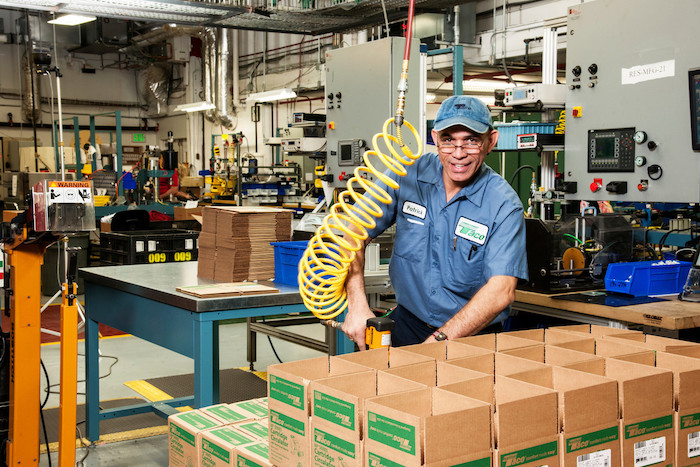
This year we also had to invest substantially to protect the health and safety of the Taco family, including employees, partners and customers. We quickly adapted our business model and the way we manufacture products so we could remain open and able to supply products.
I can’t understate the importance of these things: Taco’s health and longevity; its future, our future and the future of America’s economy depends of strengths like these and resilience that stems from smart, diligent, deliberate action – each and every day, one step at a time. We spin and pivot.
Just one example of how we’ve responded to the pandemic’s trauma and stress: our training programs have strengthened. Of course, we used to conduct more live, hands-on training at Taco and at Rep and Distributor locations, though now our online training has intensified with unexpected results. Our trainers – John Barba, Dave Holdorf, Rick Mayo, and Rich Medairos and Brett Zerba on the commercial side—have developed an incredibly strong outreach among customers. Customers are engaged and responsive, so it seems that even in the midst of challenge, we’ve managed to strengthen ties with installing contractors, system designers, engineers and specifiers. Of course, we’re eager to get back to a full slate of personal, boots-on-the-ground, hands-on and factory-based training with customers.
Undoubtedly, there are some areas in the market that have been severely impacted—hospitality is perhaps the biggest example of this. The international crisis of COVID-19 has been a huge disruption to hotel construction and renovation work. Architects and designers, general contractors and mechanical systems installers—especially those who tailored their work specifically to hospitality work—are forced to wait, with lots of business on hold. Another part of the market that’s similarly depressed is commercial office construction and remodeling.
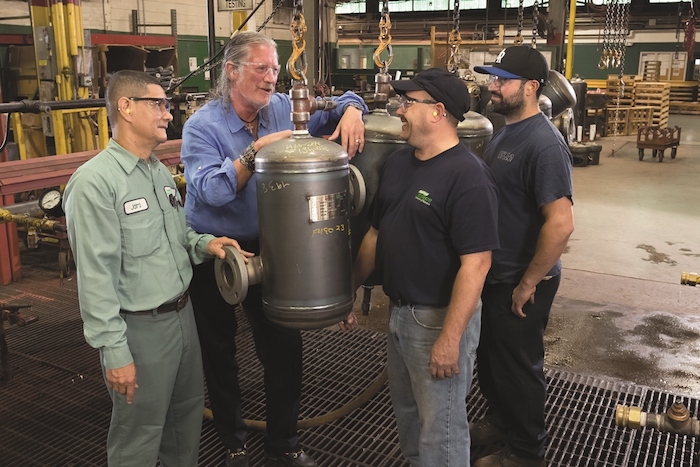
Professionals in these fields are unpleasantly faced with the need to examine the financial and technical hurdles of how to keep existing buildings in operation. Following this, there are then considerations about whether or not to downsize operations, or at least—“How can we better use the space we have, safely?”
Out of these concerns, two key issues emerge: efficiency, and ventilation.
If buildings are to remain in operation, then it’s with a greatly heightened awareness of the financial importance of improving energy efficiency in concert with maintaining the health and well-being of anyone who steps inside the building. Luckily our industry has the answers, solutions to these rather complex challenges. So in that respect, there’s a silver lining to the crisis we now face
MH: What are some indicators you look at to determine trends, movements, etc.?
CHAFFEE: We track a number of standard data sets like the consumer confidence level, stock market, and the strength of housing starts, construction and remodeling. We also watch the way people spend the money they have.
One promising change we’ve seen in response to COVID-19 has been that people are far better acquainted with their own comfort, or lack of it, at home. So, there’s a greater awareness of how to live with comfort systems, what’s involved, and how they can be improved if there are concerns. After all, families are brought together in ways that no one could have expected prior to the pandemic.
So now in the midst of winter conditions, people are responding to their own comfort or discomfort. Understandably, one of those reactions may be a desire to improve the comfort of a home. As we know, hydronic heat stands tall in that category. And, with their inherent flexibility, hydronic systems can be improved with relative ease. Not only the delivery of comfortable heat, but also the energy efficiency of system. Many Americans have chosen to invest in improvements and renovations as opposed to a vacation they can’t take. We’re seeing evidence of this every day.
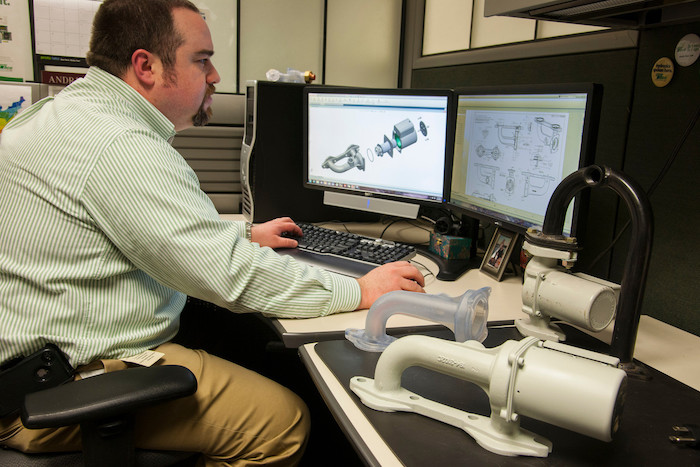
For the commercial market, we use different services to track projects through the engineering, design, specification and release of jobs. Of course, hotel and office space starts are down, though other commercial categories are still moving, though gradually and with huge variation based on geography. Interest rates remain low, money’s cheap and the underlying economy continues to chug along.
As for trends, we see the continuing expansion of strategic electrification. These initiatives are supported by more local utilities, state regulators, and fits with the new administration’s environmental stance as indicated by President Biden’s early executive actions.
For our industry, that means more heat pumps. We’ve already seen the seismic market shift to mini-splits and commercial VRF systems; but these systems use distributed refrigerant, where refrigerant lines are run throughout the building to terminal units. Adding pounds of additional refrigerant into a system where the global warming potential (GWP) of 410A is 2,088 will not be sustainable under the new climate goals Already in Europe we are seeing the move to “low GWP” refrigerants where the goal is to get under a GWP of 700. But the options for A3 and A2L refrigerants come with the risk of being flammable, along with not being retrofittable into existing 410A systems.
This is where we see the continued growth of geothermal heat pumps, especially in community based projects, along with hydronic-based air-to-water heat pumps having a major impact in future-proofing a house or building’s HVAC system while delivering heating, cooling and domestic hot water production. The best part is that the GWP of water is 0! Sure, you still need the refrigerant for the heat pump, but it’s kept at a bare minimum, is factory sealed and outside.
MH: I read somewhere that at the rate the U.S. is distributing the vaccine, we should be back to “normal” by 2024. Perhaps that’s a bit overly dramatic, but how does (has) Taco positioned itself from the “fallout” of COVID-19?
CHAFFEE: We’re cautious, but as I’ve said, we’re also optimistic. Taco continues to invest in its future.
Very important to Johnny White and Cheryl Merchant have been investments in the company and its ability to meet market demand, with products and technology that exceed expectation.
Investment in our training capability and outreach among customers is a very important part of that. Of course, Taco also invests in its people. As we’ve said on many occasion, Taco’s employees are Johnny’s family. He and Cheryl, and Johnny’s sons Ben and John—each, now with key management roles—see Taco’s stability as the continuation of a long dream, a tradition that’s grown and improved through the years only because of a genuine sense of belonging that Taco’s employees have with each other, and at all levels of company management. Our future is in their hands, so it’s easy to understand this very real emphasis.
MH: Is the only certainty heading into early 2021 uncertainty? How do you forecast and budget for such uncertainty? Or is it fairly certain at this point during the pandemic? (Certainly, a lot of certainty here, lol)
CHAFFEE: Again, we’re cautiously optimistic. And yes, some measure of uncertainty is guaranteed. We continually review and evaluate business conditions. People’s habits are changing in response to the pandemic; some of them may be altered forever. So, these become trends.
Because the HVAC industry was designated as an essential critical infrastructure workforce during the early stages of the pandemic, Taco Comfort Solutions and its suppliers were able to continue operations. Our strong, long-term relationships with suppliers, as well as our logistic partners, helped minimize supply disruptions.

Our investment in inventory, combined with a comprehensive plan to ensure the health and safety of our workforce, has enabled us to continue to provide our customers with vital heating, cooling, and hot water products. We anticipate the capacity in the logistics industry will remain tight through the first half of 2021 due to labor shortages caused by COVID-19 cases as well as the prioritization of vaccine distribution.
MH: Without getting overly political, does a change at the presidential level (and congress) change the outlook for your company, if at all? (Infrastructure, regulations, green energy initiatives, etc.)
CHAFFEE: Under the Biden presidency, underscored by the renewed involvement in the Paris Accord, it seems certain that there will be an emphasis on the environment, where the improvements to existing buildings through energy efficiency is key. But there’s also an appetite on both sides of the political isle for increased infrastructure spending. This isn’t just roads and bridges but will also focus on our aging water infrastructure including significantly increased investment in state revolving funds. And, as part of that, there will be added attention to energy and operational efficiency.
We’re sure to see more incentives for energy conservation in the form of Federal rebates for the purchase and installation of energy-conserving and IAQ technologies. This will also incentivize manufacturers to develop more energy-efficient technologies.
Attention to commercial and industrial building improvements will lead to increased recognition of the importance of pumping systems and improved hydronic systems and their role in improving the energy efficiency of buildings, coast to coast.
Taco’s ahead of the curve here. We were deeply involved in DOE’s effort to bring about the labeling of commercial pumps … and now, we believe, the emphasis will again return to accomplishing the same for residential circulators. This will again focus attention on the need to replace remaining non-ECM pumps and circulators, with far more efficient ECM-powered equipment.
Many years ago, Taco also recognized the need to invest in and develop ECM technology. Those early efforts led to our role today as the nation’s leading sources of ECM technology. Taco now offers ECM circulators and pumps, from the smallest residential circulator, to pumps that serve the commercial and industrial markets.
That’s not to say there isn’t room for improvement; there is. We plan to expand our ECM product lines substantially. There’s great strategic value in this as we maintain our leadership role in helping to continue the market’s transformation toward better, more efficient pumping.
Mark Chaffee, is Vice President of Governmental Affairs and Commercial & Industrial Product Management, Taco Comfort Solutions.

Recently, Mechanical Hub spoke with Dustin Bowerman, Director – Corporate Training and Product Support, Bradford White, regarding information surrounding gas vs. electric water heaters. The following is an exclusive Q&A. Which type of water heater is more environmentally friendly? Why? Bowerman: Although gas heaters have an exhaust element that most will immediately say is less Read more
Recently, Mechanical Hub spoke with Dustin Bowerman, Director – Corporate Training and Product Support, Bradford White, regarding information surrounding gas vs. electric water heaters. The following is an exclusive Q&A.
Which type of water heater is more environmentally friendly? Why?
Bowerman: Although gas heaters have an exhaust element that most will immediately say is less environmentally friendly, you have to consider the carbon footprint of how the electricity is generated, too. Unless coming from a renewable source, there is an inherent environmental effect with both of these fuel sources.
What is the difference in cost between the two types?
Bowerman: It’s mostly about supply and demand, although there is a regulatory element. As a rule, residential electric water heaters have fewer components, therefore are less costly to manufacture; however, in some locations, regulations or codes are driving towards the use of heat pump water heaters (HPWHs).
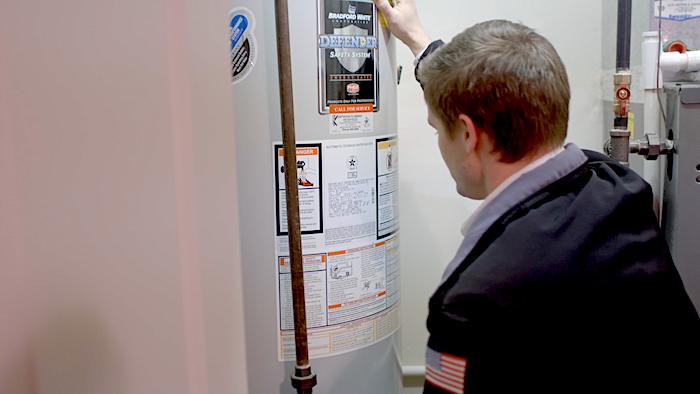
Is there a noticeable difference in return on investment for each type?
Bowerman: Both categories offer high efficiency options, as well as specialty products such as tankless or heat pump water heaters, that can reduce utility spend while delivering the same amount or more hot water than previous models. Though, these higher efficiency options typically come with higher maintenance costs.
Normally, a homeowner will request a replacement of what was already there. How difficult is it to change to a specific water heater source (gas or electric) if the home is equipped with only on type of energy source? (If home has only electric source for WH, what goes into gas conversion and vice versa)
Bowerman: Upgrading utilities can be fairly involved and will certainly require a professional’s experience. If converting from gas to electric, not only will a plumber be needed, but the job will require an electrician, to upgrade the electrical panel and run an outlet for an electric water heater. Converting from electric to gas may require adding gas piping to the home or updating the system to handle the additional demand. An all-electric home likely doesn’t have a chimney system, making gas water heater options more limited. Direct vent, power vent or power direct gas model would need to be utilized. Natural gas availability is also sometimes limited, so propane options may have to be considered if a home or business owner wants to stop using an electric product.
Overall, which is easier to install?
Bowerman: Water connections are the same on both gas and electric. Gas water heaters will have both a gas connection and an exhaust connection that must be done to complete the installation. An electric water heater has line voltage connections with, as a rule, three connections total. Both should be safely installed to comply with all local code requirements by a professional.
Does brand matter more than water heater type?
Bowerman: The type of application is always important, just like having the right tool for the job. Both types of water heaters have their strengths. Of course, brand does matter. Not every water heater is manufactured to the same level of quality nor does every company provide the same level of support and customer service.
There is a lot of talk about legionella and water-borne pathogens lately. Is there one type that is more beneficial in terms of this?
Bowerman: No. Energy source does not impact the quality of the cold-water supply being delivered to the water heater.
What is the ratio of homeowners across the country using one type over the other?
Bowerman: Generally, the entire water heater market is close to a 50/50 split on gas versus electric.
For electric, what happens during a power outage?
Bowerman: The electric water heater requires electricity to heat water. If power is lost, the tank will not reheat the stored water until the power is restored. The already heated water in the tank will remain usable until depleted or gradually cool down.
Does tankless (electric vs. gas) add another layer or dimension to this conversation? Explain.
Bowerman: Yes. Conversations about tankless water heaters are common; however, in many situations the electric options are not as often considered for whole home applications. Electrical requirements may be unrealistic for many homes while gas technologies have made great advancements making tankless gas viable, using natural gas or propane, in the right installations and climates.
Is the footprint between the two (gas vs. electric) noticeable in terms of space?
Bowerman: In terms of the actual products, like gallon capacities are commonly similar diameters, using comparable footprints. Overall, space variations will be more about the gas product’s “add-ons” (e.g. blower, draft hood) due to venting requirements.
In terms of longevity, which type is more reliable?
Bowerman: National averages for functional lifespan tend to be a couple years longer on electric water heaters.
Can you talk in terms of efficiency for both types?
Bowerman: Both energy sources offer high efficiency models. If looking at base models, electric water heaters employ immersion heating elements. As these are directly submersed into the water, most of the elements’ heat energy is being absorbed into the surrounding water. Gas water heaters employ a combustion chamber that traditionally is located below the water tank. Heat is transferred through the bottom of the tank in addition to the flue(s) that is surrounded by the stored water.
This isn’t the whole story. Annual operating cost is another measurement than can be used to compare models. While these costs are largely influenced by the local utility pricing, gas models usually show less annual operating costs. Water heaters are rated based upon how much hot water they can deliver (i.e. First Hour Rating). Depending on their First Hour Rating, models will fall into one of four draw bins. A model must only be compared to other models in the same draw bin, as this will impact the operating cost.
Could the decision gas vs. electric come down to how much water will be needed to heat? (How many people in the home and for what functions)
Bowerman: Infrastructure, what fuel source is available, and hot water demand are the largest variables in water heater selection and contractors need to understand these prior to making suggestions and doing installations.
Are electric water heaters safer?
Bowerman: Having your water heater installed and serviced by a qualified professional is the best way to make sure that your gas or electric fueled water heater is performing properly and safely.
Finally, why is the question of gas vs. electric so polarizing?
Bowerman: It’s due to a lack of understanding. For many contractors in the plumbing trade, electricity is not a part of their daily work, making it mysterious. For consumers, it’s similar. They are generally more comfortable with what they use on a daily basis and has historically worked for them.
